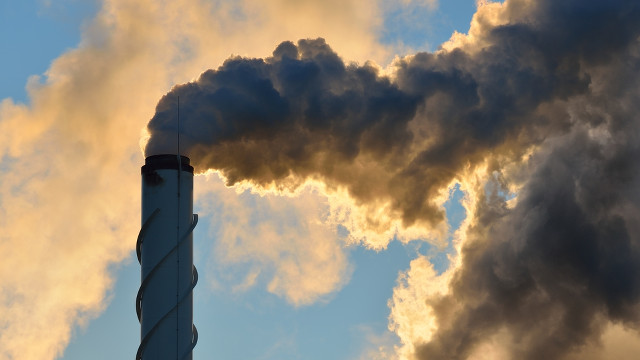 How does coal fit into the country’s energy and development equation? Our policy brief “Striking a Balance: Coal-Fired Power Plants in the Philippines Energy Future,” launched in a forum at the Ateneo School of Government (ASoG) last Tuesday, November 24, is aimed at jumpstarting a robust discussion on the viability of coal fired-power plants (CFPPs) in meeting the country’s energy needs and development goals by exploring its economic, environmental, health, social and technological dynamics.
How does coal fit into the country’s energy and development equation? Our policy brief “Striking a Balance: Coal-Fired Power Plants in the Philippines Energy Future,” launched in a forum at the Ateneo School of Government (ASoG) last Tuesday, November 24, is aimed at jumpstarting a robust discussion on the viability of coal fired-power plants (CFPPs) in meeting the country’s energy needs and development goals by exploring its economic, environmental, health, social and technological dynamics.
The Ateneo School of Government developed this policy brief with an aim to unpack the issues surrounding the controversial subject with the objective of also sparking further dialogue on the matter. An interdisciplinary group of technical, legal and policy experts (Jennifer Ramos, Cecilia Guiao, Jethro Hipe, James Esguerra and Mike Guiguio) co-authored the policy brief with us and wrote its complementary supplemental papers. Complementing our efforts, a high level group of reviewers from government, NGOs, and academe reviewed the draft brief and gave suggestions on how to improve it. As far we know, this is the first time that such a holistic study has been attempted on this issue.
The study came amid an already heated debate on the relevance and benefits of sourcing energy from CFPPs especially as some European countries pledged to have them phased out in the next decade to reduce carbon emissions and mitigate climate change. There are those from the energy industry, however, who said that it will not be sensible to dismiss CFPPs as a practicable energy of source altogether for the country especially as it targets an increase in investments and a decrease in poverty. An unstable energy situation could affect the operations of all income-generating sectors and have a pronounced impact on the economy of a country that is targeting a gross domestic product growth rate of 7% annually.
What we intended to do with this policy brief is to explore the salience of each perspective. By conducting primary and secondary research, using both international and local studies for reference as well as gathering information and perspectives through focus group discussions, we were able to come up with key findings that help provide a multifaceted appreciation of the issue.
These are the study’s touch points:
Coal-fired power plants have a significant role in meeting the country’s baseload energy requirements. However, given the current listing of the Department of Energy on committed and indicative coal-fired power plants – assuming they are all completed and built – the Philippines would already exceed the baseload requirement for 2030
According to the Department of Energy (DOE), the Philippines would need 13,167 megawatts (MW) of additional power capacity by 2030, 8, 548 (MW) of which are to be generated from baseload power plants. Coal, which is both indigenous and could be imported, appears to be a reliable source of baseload power because aside from its availability, CFPPs could also be built anywhere in the country as long as there is available water supply. Natural gas is only available in Luzon while nuclear energy is not considered an option given the disasters that have happened in nuclear power plants in Fukushima, Japan and in Chernobyl. Geothermal energy is also one of the main sources of baseload energy particularly in Luzon and Visayas, but its supply is limited as it cannot be imported, unlike coal, which is also available in Australia, Indonesia and Russia to name a few.
Data from DOE would show, however, that committed and indicative CFPPs could already provide 11,992 MW, if all plants become operational. This is more than enough to meet the country’s baseload energy requirements of 8,400 MW as specified in the Philippine Energy Plan (PEP) and has even already exceeded the 11,400 MW – out of the required 13, 167 MW – that is open for private investment.
Coal is only economically feasible for the baseload, however and is not poised to meet mid-merit and peaking energy needs. It is therefore important to highlight that since coal’s role is confined to the baseload and that the projections even point to having a potential oversupply, there should be bigger and better efforts for creating mechanisms and investing on technologies that would minimize the health, environmental and social costs of coal.
Given its host of by-products (solid wastes, emissions and discharges) and taking into account the effectiveness and availability of pollution control technologies, CFPPs are not the best option based on a strict environmental perspective
CFPPs produce considerable amount of greenhouse gas emissions, which contribute to climate change. It also uses lots of water to turn turbines and cool thermoelectric plants, emit air pollutants, produces leachate and generates ash.
CFPPs could be retrofitted, however, to increase efficiency. There are also “clean coal” technologies that could be adopted such as such as supercritical and ultra-supercritical integrated gasification combined cycle combined cycle fluidized bed combustion, which could lower emissions. The Sual Power Station in Lingayen, Pangasinan, reportedly uses similar technologies in compliance with standards of World Bank and the Department of Environment and Natural Resources.
The question is, are these technologies enough to suppress coal’s damaging impacts on the environment? What could be expected is a reduction in the stressors and byproducts, but as compared with other sources of energy such as natural gas and geothermal, coal stands out as a massive pollutant.
Based on scientific literature, there is evidence that CFPPs have health and social impacts; however, there is a lack of peer-reviewed local studies to systematically guide industry practice and policy decisions.
CFPPs produce a host of hazardous air pollutants particularly in the combustion stage. The effects of these pollutants on health could be short-term and long-term and affect respiratory, cardiovascular and neurological systems. The US Environmental Protection Agency and the American Lung Association has identified these pollutants and their specific impacts on health. Examples include uranium and radium, which are both carcinogenic and could impair the lungs.
There is a lack of local studies and documented cases of the health impacts of CFPPs, however. Local health workers in host communities also do not have the capacity to trace and monitor illnesses that could have been caused by pollutants from CFPPs.

Another significant concern that has not been documented well includes the credibility of the consultations done by CFPP operators with host communities. There have been allegations of companies deceiving people about the nature of the power plants and local government officials getting bribed in exchange of their approval of the CFPP operations. These are again, anecdotal and it would necessitate a thorough, independent investigation to assess if host communities have sincerely given their consent to the operation of CFPPs in their areas.
Access and disclosure of information on the payment and use of compensation funds from the companies such as electricity, development and livelihood funds as well as reforestation, watershed management, health or environment funds must also be improved.
The current policy approach for energy in the Philippines is geared solely towards available, reliable and affordable supply rather than genuine energy security consistent with sustainable development – in spite of the fact that our body of energy laws are among the most progressive in the developed world.
Policies on energy security in the country are more skewed in favor of energy supply and distribution and only consider the sector’s health and social impacts as externalities. The main concern is to meet the demand, but there is no conscientious assessment of how a certain energy option could affect the other aspects of development. This shows the need for further interagency coordination between DOE, DENR, Department of Health and the National Economic Development Authority.
The Electric Power Industry Regulation Act (check) has called for “environment-friendly, indigenous and low-cost sources of energy” but the preference has been geared towards the “low-cost” consideration because the consequences on health and social aspects have not been thoroughly determined and measured for the longest time.
The government has to address this especially as it has submitted its Intended Nationally Determined Contributions (INDCs) to the UN Framework Convention on Climate Change where it said that it would reduce its GHG emissions by 70 percent given international assistance and has also committed to meet the UN Sustainable Development Goals.
Continue the conversation
The next batch of leaders and lawmakers should map a policy direction that pushes for the compatibility of energy objectives with those of our commitments to improve also the health and environmental sectors – and this necessitates moving away from the predominant bias of Philippine energy policy towards “technology neutrality.” Furthermore, the new generation of leaders should meaningfully engage industry as partners in the shift towards a truly competitive energy sector that is not only driven by cost alone but by clear priorities towards facilitating energy security in service of sustainable development.
We also recommend that a gold standard be adopted in the assessment, approval and evaluation of CFPP proposals and operations. A life cycle assessment of the coal value chain is essential to informing this gold standard as well as the conduct of cost and benefit analysis and scientific validation of health and environmental impacts.
There are alternatives to coal and this is evidenced by the pace in which new technologies are being developed to be more “flexible” to serve as baseload energy sources including renewables, but their utilization would require leveling the playing field of energy planning in the immediate future. The role of coal must be capped in the energy mix and an enabling environment must be provided to electrify the private sector in exploring other cleaner and greener energy sources for the mid-merit and peaking needs, while also potentially supporting baseload power needs.
The energy – no pun intended - from the stakeholders that attended our policy forum on coal on Nov. 24 showed a need to continue the conversation on coal. Some government and nongovernment actors shared their current efforts on developing a more strategic and comprehensive assessment of the environmental, health and social costs of coal. There is also a resounding call to internalize these costs so that the private sector and the government will be more guided on its energy planning and investment decisions.
Let's have a rigorous dialogue on coal and let’s keep it going so that we could finally strike the balance we are aiming for in achieving sustainable development. – Rappler.com
Dean Antonio G.M. La Vina has served as the dean of the Ateneo School of Government since 2006. He has previously served as an undersecretary of the Department of Environment and Natural Resources and also worked at the World Resources Institute in Washington, D.C. He has published numerous local and international studies on climate change and the environment.
Lawrence Ang is a public-private partnership specialist focused on facilitating cross-sector collaborations towards developing and accelerating sustainability solutions in emerging economies.